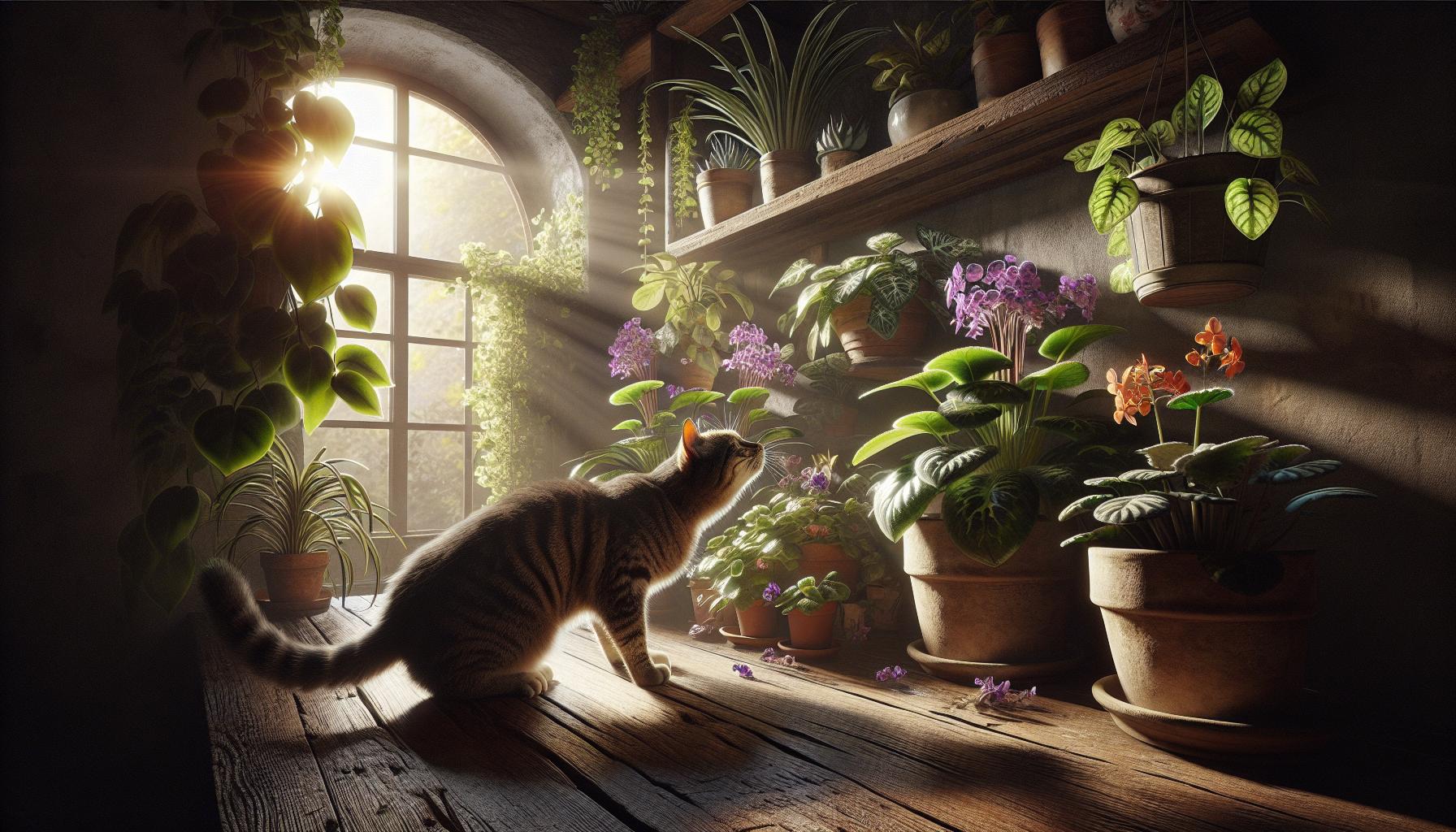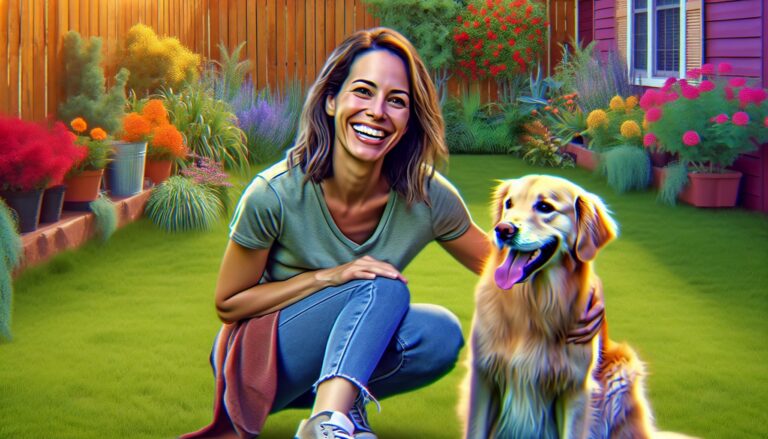As a cat parent and plant enthusiast I know the challenge of creating a pet-safe indoor garden. Many popular houseplants can be toxic to our feline friends leading to serious health issues if ingested. That’s why I’ve spent years researching and testing cat-friendly plants that bring nature indoors without putting our pets at risk.
I’m excited to share my curated list of beautiful non-toxic houseplants that cats and plant lovers can safely coexist with. From lush spider plants to colorful African violets these pet-friendly options will transform your space into a thriving indoor jungle while keeping your curious kitties protected. Let me show you how to create a stunning green oasis that both you and your feline companion can enjoy without worry.
Key Takeaways
- Many common houseplants can be toxic to cats, but there are numerous beautiful pet-safe alternatives available for indoor gardening
- Safe flowering options include African Violets, Spider Plants, and Boston Ferns – all providing visual appeal without risking cat health
- Non-toxic tropical plants like Calathea, Parlor Palm, and Money Tree can create a lush environment while keeping felines protected
- Strategic placement is crucial – using elevated spots, dedicated plant zones, and protective barriers helps prevent unwanted cat interactions
- Always verify plant safety through reliable sources like the ASPCA Plant Database before bringing new plants into a home with cats
Understanding Cat-Safe House Plants
Cat-safe house plants combine aesthetic appeal with pet safety features that protect curious felines from toxic reactions. I’ve researched extensively to provide accurate information about plant selections that create a harmonious environment for both cats and indoor gardens.
Why Cats Are Sensitive to Certain Plants
Cats possess heightened sensitivity to plant compounds due to their unique liver metabolism system. Their digestive enzymes lack the ability to process specific plant chemicals called glucosides alkaloids terpenoids. Here’s what makes cats particularly vulnerable:
- Limited detoxification capabilities in their liver compared to other mammals
- Increased oral exposure through grooming behaviors
- Heightened curiosity leading to plant sampling
- Sensitive digestive systems that react to foreign substances
- Quick absorption rates of toxins through oral mucosa
Common Toxic Plants to Avoid
Several popular houseplants contain compounds that create adverse reactions in cats. Here’s a comprehensive list of toxic plants with their specific risks:
| Plant Name | Toxic Compound | Effects on Cats |
|---|---|---|
| Lilies | Lycorine | Kidney failure |
| Pothos | Calcium oxalate | Oral irritation |
| Philodendron | Calcium oxalate | Throat swelling |
| Snake Plant | Saponins | Gastrointestinal upset |
| Monstera | Insoluble oxalate | Mouth burning |
Key indicators of plant toxicity include:
- White sap or milky substances
- Bulbous roots or tubers
- Spotted or mottled leaves
- Strong fragrances
- Rapid growth patterns
I maintain strict verification of plant toxicity through the ASPCA Plant Database to ensure accurate identification of harmful species. Each plant listed undergoes regular updates based on veterinary toxicology reports.
Pet-Friendly Flowering Plants
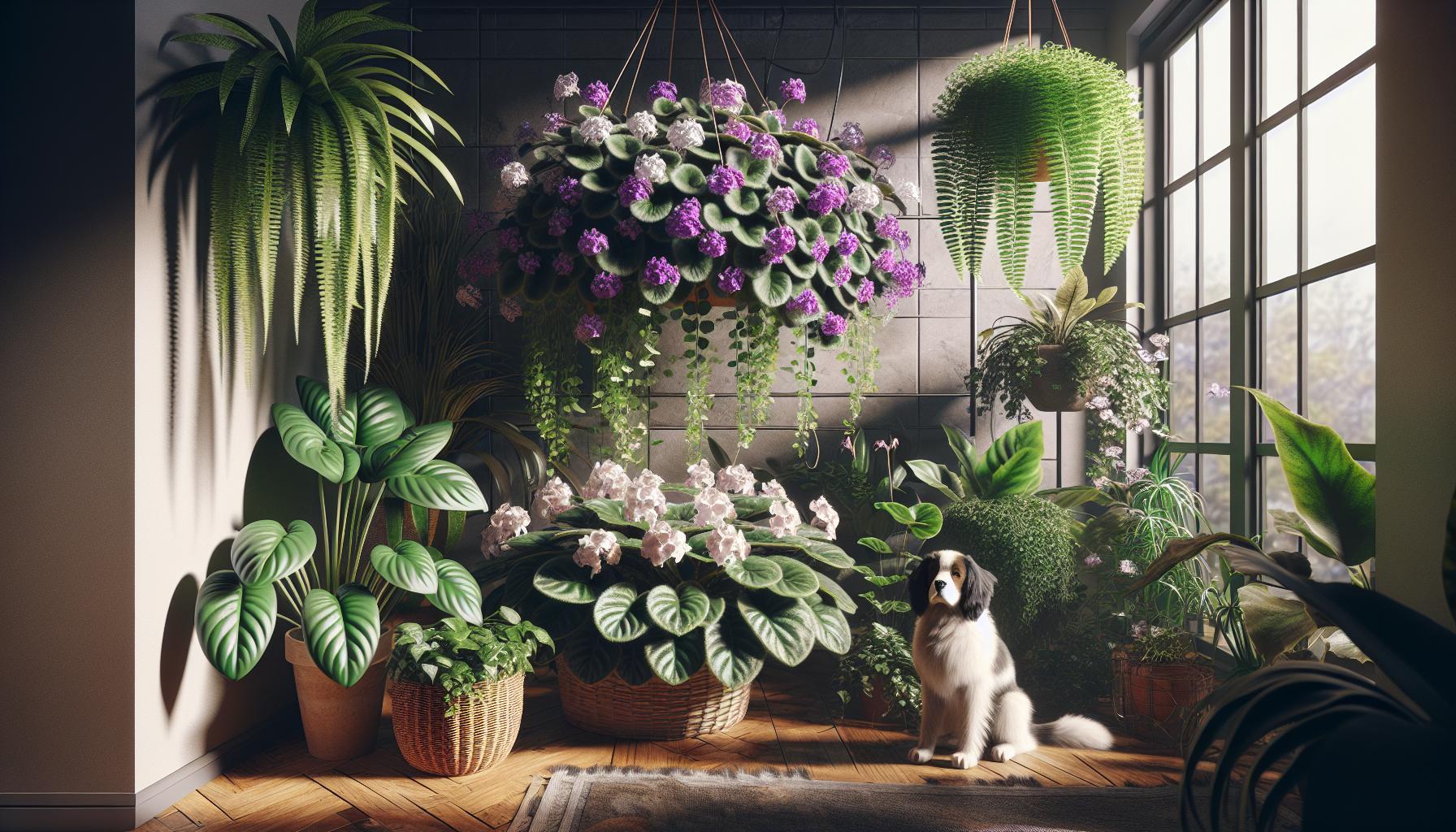
Creating a vibrant indoor garden with flowering plants adds beauty to any space without compromising cat safety. Here are three popular flowering houseplants that create visual interest while remaining non-toxic to cats.
African Violet
African violets produce clusters of purple pink or white blooms throughout the year in proper indoor conditions. These compact plants thrive in moderate indirect light with temperatures between 65-75°F. I maintain my African violets in self-watering pots to provide consistent moisture without overwatering their sensitive root systems.
Spider Plant
Spider plants feature graceful arching leaves with distinctive white stripes along their centers. The plants produce long stems with tiny white star-shaped flowers followed by plantlets that dangle like decorative ornaments. I place my spider plants in hanging baskets to showcase their trailing growth pattern while keeping the dangling parts at a safe height for curious cats.
Boston Fern
Boston ferns display delicate fronds with tiny leaflets creating a soft feathery appearance. These plants produce spores rather than flowers yet offer year-round ornamental value. I position Boston ferns in areas with high humidity away from direct sunlight as their lush green foliage thrives in bright indirect light with consistent moisture levels.
| Plant Name | Light Requirements | Watering Needs | Mature Size |
|---|---|---|---|
| African Violet | Moderate Indirect | Moderate | 6-8 inches |
| Spider Plant | Bright Indirect | Light to Moderate | 12-24 inches |
| Boston Fern | Bright Indirect | High | 24-36 inches |
Safe Succulents and Cacti
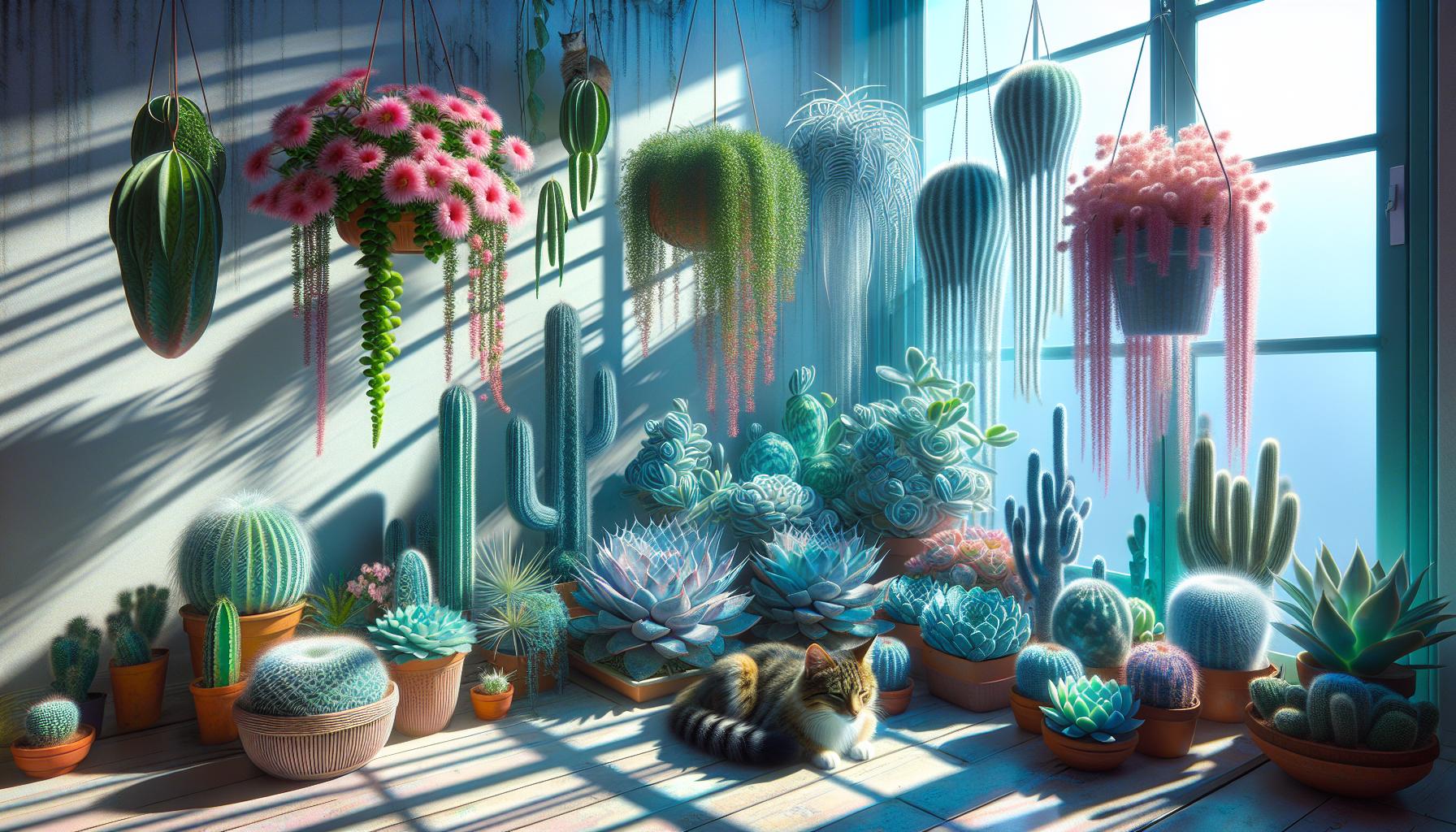
Succulents and cacti offer low-maintenance options for cat-friendly indoor gardens. These drought-tolerant plants thrive in bright spaces while maintaining complete safety for curious felines.
Haworthia
Haworthia features short rosettes of fleshy leaves with unique striped patterns. I’ve found these compact succulents perfect for windowsills or small spaces, reaching only 3-4 inches in height. The plant thrives in bright indirect light with minimal watering every 14-21 days.
Christmas Cactus
Christmas cactus produces vibrant pink or red blooms during winter months on trailing stems. I grow these pet-safe cacti in hanging baskets or elevated pots, allowing the stems to cascade naturally. The plant requires:
- Bright indirect light away from hot afternoon sun
- Watering when top 1 inch of soil feels dry
- Temperatures between 60-70°F
- 50-60% humidity levels
Blue Echeveria
Blue echeveria displays powder-blue rosettes with thick fleshy leaves arranged in a symmetrical pattern. Growing conditions include:
- 6+ hours of direct sunlight daily
- Well-draining cactus soil mix
- Watering only when soil is completely dry
- Temperatures between 65-80°F
The plant reaches 6-8 inches in diameter at maturity, making it ideal for tabletop displays or windowsill gardens.
Tropical Plants Safe for Cats
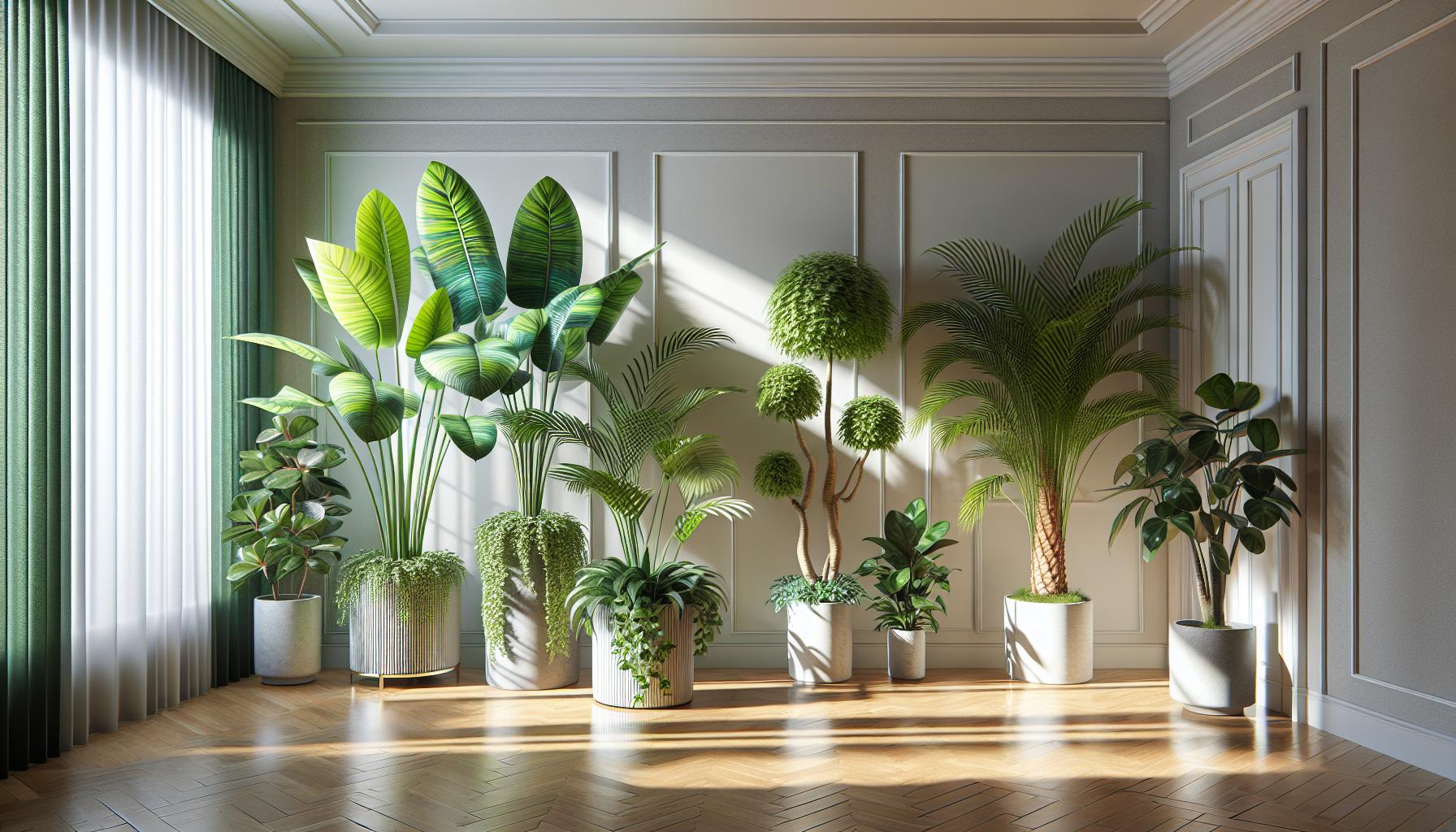
Tropical houseplants add lush greenery to indoor spaces while maintaining pet safety. These non-toxic options create a jungle-like atmosphere without risking feline health.
Calathea
Calathea plants display striking patterned leaves that move throughout the day. These prayer plants thrive in bright indirect light with 60-80% humidity levels. I’ve found their decorative foliage, featuring intricate patterns in purple, pink, white or green, creates visual interest in any room. Calatheas grow to 2 feet tall in well-draining potting mix with consistent moisture.
Parlor Palm
Parlor palms (Chamaedorea elegans) bring a tropical feel with their feathery fronds reaching 4-6 feet tall. These palms adapt to low-light conditions making them perfect for darker corners. I maintain mine in temperatures between 65-80°F with moderate watering once the top inch of soil feels dry. Their compact growth pattern fits well in small spaces.
Money Tree
Money trees (Pachira aquatica) feature distinctive braided trunks topped with palm-like leaves. These symbolic plants grow 6-8 feet tall indoors with proper care. I position mine in bright indirect light keeping the soil lightly moist but never waterlogged. Money trees prefer humidity above 50% making them ideal bathroom companions where cats often explore.
| Tropical Plant | Light Needs | Mature Height | Humidity Requirements |
|---|---|---|---|
| Calathea | Bright indirect | 2 feet | 60-80% |
| Parlor Palm | Low to moderate | 4-6 feet | 40-50% |
| Money Tree | Bright indirect | 6-8 feet | 50%+ |
Tips for Creating a Cat-Safe Indoor Garden
Creating a safe indoor garden requires strategic placement of non-toxic plants paired with careful observation of feline behavior patterns. Here’s how to establish a thriving plant collection while protecting curious cats.
Strategic Plant Placement
Plant placement impacts both plant health and cat safety in an indoor garden. Here are key placement strategies:
- Position hanging baskets at elevated heights (6+ feet) to prevent curious paws from reaching leaves
- Place smaller plants on sturdy window sills behind sheer curtains for filtered light protection
- Group plants on dedicated plant stands with narrow ledges cats can’t access
- Create designated plant zones in rooms cats visit less frequently
- Use terrarium enclosures for delicate plants requiring specific humidity levels
- Install wall-mounted planters above cat climbing zones
- Set up plant barriers using decorative screens or room dividers
- Document which plants attract the most feline attention
- Track any plant-related behavioral changes like excessive chewing or pawing
- Note preferred plant investigation times (morning, evening, night)
- Identify trigger plants that consistently draw cat interest
- Watch for signs of plant stress from cat activity
- Monitor soil disruption from digging attempts
- Record any symptoms of plant ingestion:
- Drooling
- Vomiting
- Loss of appetite
- Lethargy
- Changes in litter box habits
| Cat Behavior | Recommended Action | Prevention Strategy |
|---|---|---|
| Chewing | Move plant to elevated location | Provide cat grass alternative |
| Digging | Add decorative rocks to soil surface | Create dedicated digging box |
| Rubbing | Install protective barrier | Offer scratching posts nearby |
| Jumping | Secure plant stands | Use deterrent spray around area |
Conclusion
I’ve shared my knowledge about creating a thriving indoor garden that’s completely safe for our feline friends. By choosing from the wide variety of non-toxic plants available you can enjoy the beauty of nature without compromising your cat’s safety.
Remember that every cat is unique so it’s essential to monitor their behavior around new plants. I always recommend double-checking plant toxicity through the ASPCA database before making any purchases.
With these cat-safe options and proper placement strategies you’ll be well-equipped to create a stunning green oasis that both you and your furry companion can enjoy worry-free.

